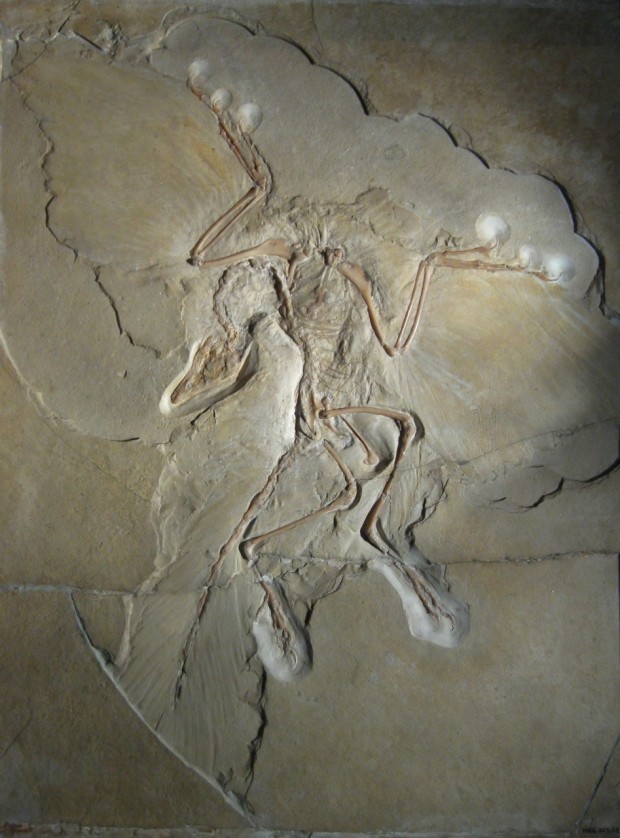Living some 150 million years ago, Archaeopteryx sported feathers and a saurine skeleton. Standing on the brink between dinosaurs and birds, Archaeopteryx has long represented the concept of transitional species so intuitively important in the acceptance of Darwin’s theory of natural selection. Its fossils have been museum favorites ever since the first fossil feather of the so-called Urvogel or “first bird” was discovered Germany in 1860.
The image above shows the so-called Berlin Archaeopteryx unearthed in about 1875, the most complete fossil representative of the species we have. But it’s worth bearing in mind that what we see here is not the creature, nor an anatomical specimen prepared from an extant animal. A fossil is an image; after the body comes to rest in moist sediments, minerals fill in and replace organic compounds lost to decay, forming a kind of photograph-in-stone of a creature’s most durable anatomy. When paleontologist Christian Erich Hermann von Meyer described the fossil feather in 1861, he named the species Archaeopteryx lithographica�the specific epithet a recognition of the importance of an image-making process found in the Earth’s crust. But like any graphic medium, the fossil record is prejudiced and partial; only certain kinds of creatures in certain environmental conditions ever achieve the timeless apotheosis of fossilization. Earth’s picture album of life is highly informative, and yet incomplete.
[thanks, Debbie Chachra!]The fourth in a series of posts about images that have changed the way we understand and make use of the natural world.
 Gearfuse Technology, Science, Culture & More
Gearfuse Technology, Science, Culture & More



